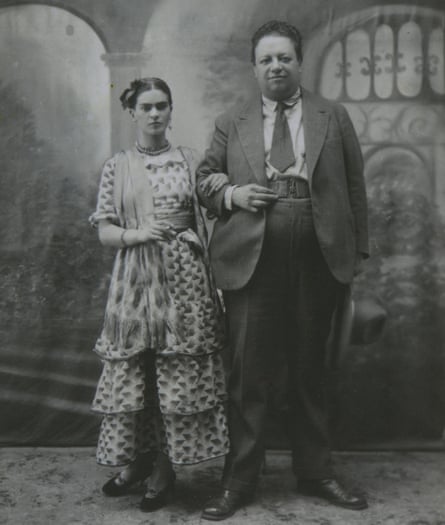Becoming Frida Kahlo review – this joyful celebration makes the ...
Too often, documentaries about art and artists can lean towards the pretentious and stodgy. Not so with Becoming Frida Kahlo, the first of a three-part series on the legendary Mexican painter, which canters along at a celebratory pace. This opening episode, The Making and Breaking, squashes a great deal of information and insight about Kahlo’s early life into an hour, and sets up a gripping and convincing portrait of the great artist that she would become.
Her work is so familiar (and so astonishingly valuable – her 1949 painting Diego y yo sold for almost $35m in 2021) that it seems a mammoth task to shine a new light on it, and yet this documentary manages to do so. There are interviews with biographers, art historians, and, fascinatingly, family members. Kahlo’s great-niece Cristina Kahlo, now a photographer, talks about the artist’s husband and great love, the artist Diego Rivera, as does Rivera’s grandson. The information they provide is out there already – Rivera was a huge celebrity in Mexico, as famous as Picasso in his time (“possibly Picasso was more famous”, says one contributor) – yet it gives it a personal and comprehensive feel.
It is broken up into mini-chapters, each with its own heading. There is “Everything goes wrong”, which details the bus crash that almost killed Kahlo, leaving her with terrible injuries and derailing her plan of becoming a doctor, turning her towards art instead. “Most of my friends grew up slowly. I grew up in an instant,” she famously said, of the accident. There is “It’s all happening here”, a love letter to Mexico from 1920 to 1940, explaining why so many people found themselves drawn to the country at that time, from movie stars to artists to revolutionaries. And then there are the sections about Rivera, first a teacher, then a friend, and then her husband. Their wedding was attended only by Kahlo’s father; her mother, we are told, could not accept that she would marry a man 20 years older, “and a communist”. The photograph of the couple on their wedding day shows Kahlo irreverently smoking a cigarette.

Obviously there is little footage of either Kahlo or Rivera, so instead this documentary pieces together its thesis using interviews, photographs, newspapers – their wedding was front-page news – and the occasional bit of scene-setting from modern-day Mexico City, though this is used sparingly. It also draws heavily on Kahlo’s own words and work. There is one particularly memorable moment when, in her convalescence after the bus accident, she turns to painting from her bed, aided by her mother, who built her an adapted easel. We hear that her boyfriend at the time, Alejandro Gómez Arias, has abandoned her, perhaps due to the seriousness of her injuries. The camera slowly and tantalisingly crawls up the magnificent Self-Portrait in a Velvet Dress, her first self-portrait, as if finally revealing all the talent and potential that has been waiting to emerge.
This is a loving portrayal of Kahlo, and it cheers on her rebelliousness and non-conformity so convincingly that it’s impossible not to join in. It covers all the points you might expect from a 2023 documentary about her life and work. There are queer readings of her art and conversations about women in Mexico in the early 20th century, attempting to reconcile the independence that was promised to them with the social and cultural obligations of the era. (There is a brilliant detour into the life of her friend, the photographer and activist Tina Modotti, who experienced a very contemporary-sounding humiliation in the press in 1929.)
The early years of her relationship with Rivera form the bulk of the opening episode. It reminded me of Modern Couples, an exhibition at the Barbican in London a few years ago, that featured the work of Kahlo and Rivera among many others, and examined how artistic couples managed their creativity. It was full of little insights into ego and collaboration and jealousy. By the end of this opener, he is the “great maestro” and she is the “little wife … always in the shadows”; the irony, of course, being that we know how this story ends, and history has put Rivera in the shadows, albeit brightly lit.
By the end, Kahlo’s work has taken a turn towards darkness, and we are confronted with the pain that drove her to create. “I had to paint it because I felt murdered by life,” she says.
Unsurprisingly, then, there is almost too much to cram into three hour-long episodes; you wonder what it would have been like with more time. But, like Sensationalists, the BBC’s great recent documentary series on the Young British Artists, this has a vivid and winning sense of life and joy, as well as pain.
skip past newsletter promotionafter newsletter promotion
Becoming Frida Kahlo was shown on BBC Two and is now on iPlayer











































